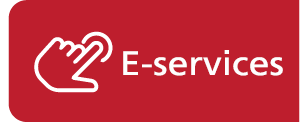
Drug Information
| Drug Generic Name | ADRENALINE (Epinephrine)) |
| Drug Class | BRONCHODILATORS AND ASTHMA DRUGS |
| Chapter | Respiratory System |
|
Indication: A non-selective adrenoceptor agonist, used in reversible airways obstruction; emergency treatment of acute anaphylaxis; angioedema; cardiopulmonary resuscitation. Cautions: hyperthyroidism, diabetes, ischaemic heart disease, hypertension, elderly patients. Tolerance to bronchodilator effect may develop. Not to be given intravenously or with tricyclic antidepressants, digoxin, or quinidine because of increased risk of arrhythmias. Interactions: adrenaline may cause severe hypertension in those receiving beta-blockers. Patients on tricyclic antidepressants are considerably more susceptible to arrhythmias, calling for the dose of adrenaline to be reduced by 50%. Side Effects: nausea, vomiting; tachycardia, arrhythmias, palpitation, cold extremities, hypertension (risk of cerebral haemorrhage); dyspnea, pulmonary oedema (on excessive dosage or extreme sensitivity); anxiety, tremor, restlessness, headache, weakness, dizziness; hyperglycaemia; urinary retention; sweating; tissue necrosis at injection site and angle- closure glaucoma also reported. Dose: acute anaphylaxis by IM (or SC) injection of 1: 1000 (1mg/ml) solution, adult, 0.5- 1ml. Child: 6-12 years, 0.5ml; 5 years, 0.4ml; 3-4 years, 0.3ml; 2 years, 0.2ml; 1 year, 0.1ml; under 1 year, 0.05ml. These doses may be repeated every 10 minutes according to blood pressure and pulse until improvement occurs. In underweight children (2-12 years), use half the above doses. Intravenous route for the 1 in 10, 000 (100 mcg/ml) preparation should be used with extreme care. |
|
| Brand Name |
|


